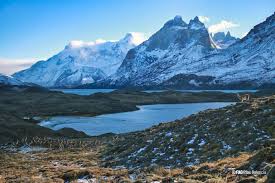Safeguarding the Amazon: A Collaborative Approach to Environmental Sustainability in South America
The Amazon rainforest, a globally significant ecosystem, faces unprecedented threats jeopardizing its biodiversity, climate regulation functions, and the livelihoods of its indigenous inhabitants. This article analyzes the complex interplay of ecological, socio-economic, and political factors contributing to the rainforest's degradation, proposing a framework for collaborative strategies based on established environmental and social theories. Key concepts explored include the Tragedy of the Commons, illustrating the challenges of collective resource management; the theory of planned behavior, which explains individual actions towards environmental conservation; and the socio-ecological systems framework, highlighting the interconnectedness of human and natural systems.
1. Deforestation and its cascading effects: The rampant deforestation driven by agricultural expansion, illegal logging, and infrastructure development constitutes a primary threat. This process not only diminishes biodiversity but also disrupts the rainforest’s crucial role as a carbon sink, exacerbating climate change. This aligns with the Tragedy of the Commons, where the lack of clearly defined property rights and effective regulation leads to overexploitation of a shared resource. The resulting loss of ecosystem services has profound economic and social consequences, impacting regional and global climate patterns.
2. Climate Change Impacts and Feedback Loops: Climate change, in turn, intensifies deforestation through increased droughts and wildfires, creating a dangerous feedback loop. Rising temperatures and altered precipitation patterns stress the rainforest's resilience, potentially pushing it towards a tipping point, beyond which recovery becomes extremely difficult. Understanding these dynamic interactions is crucial for effective intervention strategies.
3. Biodiversity Loss and Ecosystem Services: The Amazon's unparalleled biodiversity is threatened by habitat loss and fragmentation. The extinction of numerous plant and animal species undermines the ecosystem’s resilience and diminishes its ability to provide crucial services, such as clean water, pollination, and climate regulation. Conservation efforts must prioritize protecting both individual species and entire ecosystems, recognizing the intricate web of life within the rainforest.
4. Indigenous Rights and Knowledge: Indigenous communities, possessing invaluable traditional ecological knowledge, play a critical role in rainforest stewardship. Their land rights and self-determination must be respected and actively supported. Empowering indigenous communities and incorporating their perspectives into conservation planning is essential for long-term success, aligning with principles of environmental justice and promoting sustainable development goals.
5. Collaborative Governance and Sustainable Development: Addressing these interconnected challenges necessitates a multi-faceted approach involving collaborative governance. This includes strengthening environmental legislation, fostering partnerships between governments, non-governmental organizations (NGOs), indigenous communities, and the private sector to develop and implement sustainable solutions. Applying the theory of planned behavior, initiatives should focus on influencing attitudes, subjective norms, and perceived behavioral control to promote pro-environmental actions among diverse stakeholders.
6. Sustainable Agricultural Practices: Sustainable agricultural techniques, such as agroforestry and reduced deforestation agriculture, can reduce the pressure on the rainforest while ensuring food security. Promoting these methods through education, incentives, and policy support is vital for transitioning towards environmentally friendly farming practices.
7. Responsible Ecotourism and Economic Diversification: Ecotourism can provide a sustainable alternative to destructive economic activities, generating income for local communities while preserving the rainforest. This requires careful planning and regulation to minimize environmental impact and maximize benefits for local populations.
8. Education, Awareness, and Behavioral Change: Raising public awareness about the importance of the Amazon rainforest and its vulnerability is crucial. Educational campaigns can inform and empower individuals to make responsible choices, supporting organizations committed to rainforest protection. This aligns with the theory of planned behavior, aiming to shift attitudes and behaviors towards environmental stewardship.
9. Technological Innovations and Monitoring: Technological advancements play a significant role in monitoring deforestation, tracking illegal activities, and developing innovative solutions. Investing in remote sensing technologies, data analytics, and early warning systems allows for timely and effective intervention.
10. International Collaboration and Funding: The protection of the Amazon rainforest is a global responsibility. International cooperation, including knowledge sharing, financial support, and coordinated policy action, is crucial for achieving meaningful progress. This requires establishing clear mechanisms for collaboration and resource mobilization across nations.
Conclusions and Recommendations
The multifaceted challenges facing the Amazon rainforest demand a holistic and collaborative approach grounded in scientific understanding and social equity. Effective strategies must address the root causes of deforestation, promote sustainable development, and empower local communities. Applying the socio-ecological systems framework, we can better understand the complex interactions between human activities and the environment, guiding the development of integrated policies. Future research should focus on refining methods for monitoring deforestation, evaluating the effectiveness of diverse conservation strategies, and improving our understanding of the Amazon’s resilience to climate change. The success of Amazon rainforest protection hinges on a commitment to collaborative governance, sustainable practices, and the long-term well-being of its inhabitants and biodiversity.
Reader Pool: What innovative policy mechanisms could effectively incentivize sustainable land management practices and discourage deforestation in the Amazon region, considering the complexities of local communities, national interests, and global markets?





No comments yet. Be the first to share your thoughts!